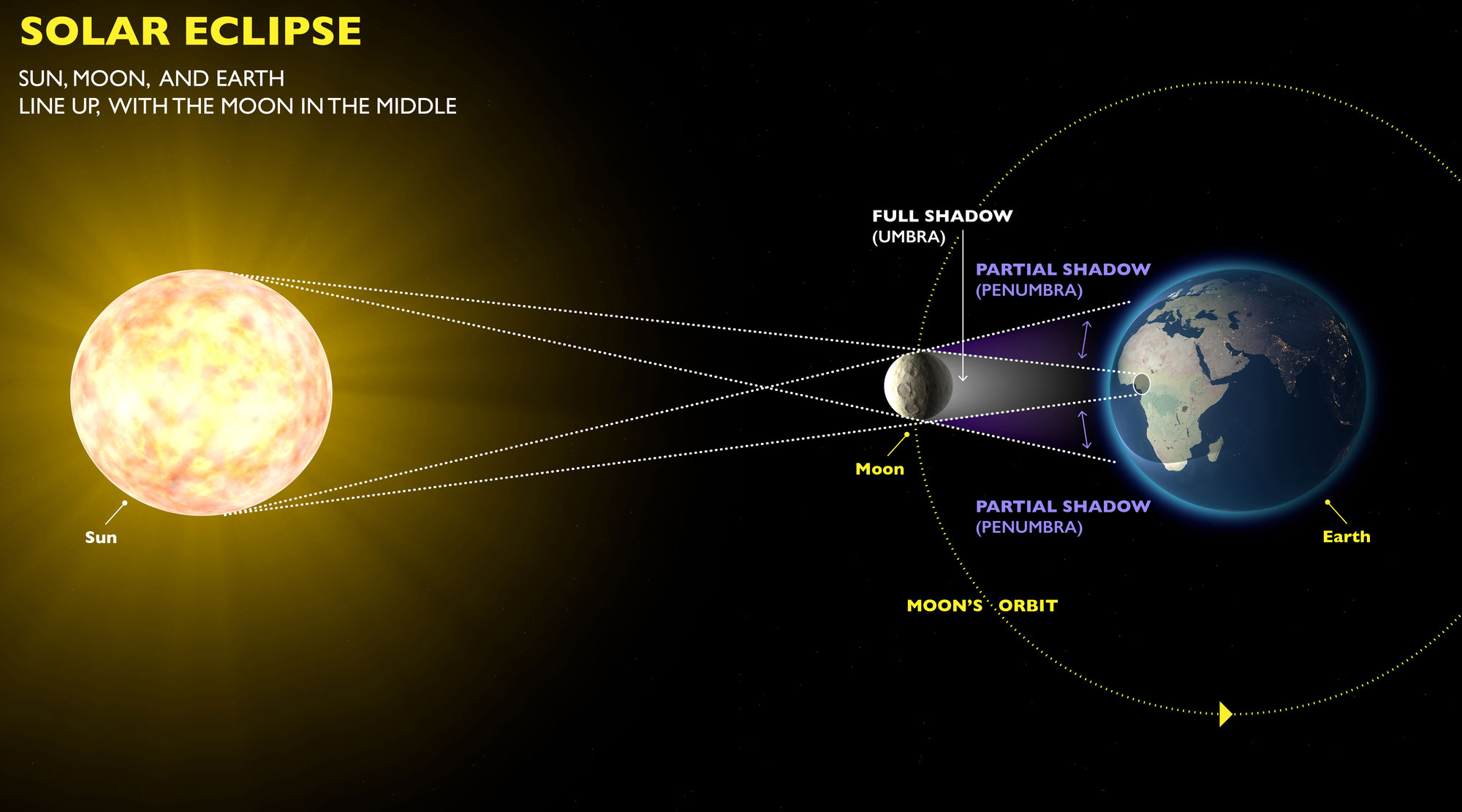For a solar eclipse to take place, the Sun, the Moon, and Earth must be aligned in a perfect or near perfect straight line–an alignment astronomers call syzygy. This happens around New Moon every lunar month. Solar eclipse happens when the New Moon moves between the Sun and Earth, blocking out the Sun’s rays and casting a shadow on parts of Earth.The Moon’s shadow is not big enough to engulf the entire planet, so the shadow is always limited to a certain area. This area changes during the course of the eclipse because the Moon and Earth are in constant motion: Earth continuously rotates around its axis while it orbits the sun, and the Moon orbits Earth. This is why solar eclipses seem to travel from one place to another.
Types of Solar Eclipses:
There are 4 different types of solar eclipses. How much of the Sun’s disk is eclipsed depends on which part of the Moon’s shadow falls on Earth.
1. Partial solar eclipses occur when the Moon only partially obscures the Sun’s disk and casts only its penumbra on Earth.
2. Annular solar eclipses take place when the Moon’s disk is not big enough to cover the entire disk of the Sun, and the Sun’s outer edges remain visible to form a ring of fire in the sky. An annular eclipse of the Sun takes place when the Moon is near apogee (the farthest point from the earth), and the Moon’s antumbra falls on Earth.The antumbra is the region from which the occluding or obstructed body appears entirely within the disc of the light source. An observer in this region experiences an annular eclipse, in which a bright ring is visible around the eclipsing body. If the observer moves closer to the light source, the apparent size of the occluding body increases until it causes a full umbra.

3. Total solar eclipses happen when the Moon completely covers the Sun, and it can happen only when Moon is near perigree – the point of the Moon’s orbit closest to Earth. You can only see a total solar eclipse if you’re in the path where the Moon’s casts its darkest shadow, the umbra.
4. Hybrid Solar Eclipses, also known as annular-total eclipses, are the rarest type. They occur when the same eclipse changes from an annular to a total solar eclipse, and/or vice versa, along the eclipse’s path.
Solar eclipses are only visible from within the area on Earth where the Moon’s shadow falls. The closer one is standing to the center of the shadow’s path, the bigger the eclipse looks.One must not look directly at the Sun, eclipsed or otherwise, without any protective eyewear. The ultraviolet radiation of sun can burn the retina of human eyes leading to permanent damage or even blindness. The best way to safely watch a total solar eclipse is to wear protective eclipse glasses or to project an image of the eclipsed Sun by using a projector.









Comment